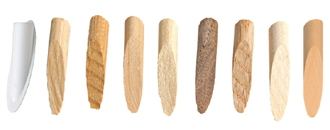|
Not for every project
I don’t use pockethole joinery in every project – because
of the size of the elongated oval slot caused in the surface of the workpiece,
I tend to use pocketholes in situations where this cannot be seen. There
are fillers available, in a variety of timbers (and white plastic for
melamine), and you could conceivably use a contrasting timber to produce
a visual effect.

On the other hand, it would be hard to find another joinery system more
suitable for joining melamine, MDF and other materials that tend to have
a very weak end-grain glued joint. This is particularly true for carcass
construction for cabinetry and building kitchen melamine (MDF or particleboard
cored) cupboards. It’s important to plan a project around the joints and keep them
hidden.
|